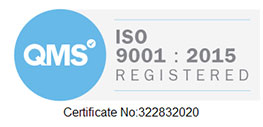As part of G99 / Grid Code compliance studies, it is necessary to carry out a series of Voltage Control studies, and check performance stability. Voltage control is used in some parts of the UK, and common in Scotland, but it is not widely used in England or Wales.
Voltage control mode is a form of voltage-reactive power droop response. At nominal system voltage of 1.0pu, the generator reactive power output should be 0MVAr. When the system voltage falls, the generator should start exporting more reactive power, and if the voltage rises, the generator should start importing reactive power. The bounds of the MVAr output of the generator is 0.95PF lag to 0.95PF lead.
The allowable voltage droop range is between 2-7%, but in practice most operators would select a droop of 4% to 5%. At 4% droop, the generator would reach full MVAr output at system voltage of 0.96pu, and full MVAr import at a system voltage of 1.04pu. For example, a 50MW generator, experiencing a network voltage of 0.96pu would produce approximately +16.5MVAr, at 0.98pu it would be +8.25MVAr, at 1.02 it would be -8.25MVAr, and so on.
For Type B plants, there is no specific need, or expectation to operate in voltage control mode, and these generators have no performance requirements.
For Type C / D plants the voltage control response is built into the Power Park Controller, and the PPC is responsible for managing the network voltage. Interestingly, when compared to LFSM/FSM for frequency response, there are some very specific performance requirements for voltage control of the PPC, and some tuning of the PPC is often required.
The system studies required for voltage control are given in section C7.4 of G99, and section ECP.A.3.4 of the Grid Code. The two sections are virtually identical, but the Grid Code includes an extra scenario (v).
i) At maximum RC, and 0 MVAr (i.e. 1.0pu voltage), apply a negative voltage step to cause the system to reach maximum lagging PF (MVAr export).
ii) At maximum RC, and 0 MVAr (i.e. 1.0pu voltage), apply a positive voltage step to cause the system to reach maximum leading PF (MVAr import).
iii) At maximum RC, and 95% of lagging PF (MVAr export), apply a 2% negative voltage step to check stability.
iv) At maximum RC, and 95% of leading PF (MVAr import), apply a 2% positive voltage step to check stability.
v) At maximum RC, and leading PF (MVAr import), apply a negative voltage step to cause output to move to maximum lagging PF (MVAr export).
Interestingly, the requirement for (iii) and (iv) is to demonstrate control stability, rather than to a specific value – although this is obviously inferred as well.



